Disclosure: This article contains affiliate links. We may earn a commission from purchases at no extra cost to you, which helps our travel content.
The Amazon rainforest has always held a special allure for me, not unlike the reverence I once felt standing in Lord's Cricket Ground for the first time. There's something sacred about these spaces—one a cathedral to human achievement, the other nature's grand masterpiece. After covering sporting events across six continents, I've developed a particular fondness for places where natural wonder and cultural heritage intertwine. Saint-Laurent-du-Maroni in French Guiana represents precisely this confluence: a former penal colony nestled at the edge of the Amazon, where colonial French architecture stands in stark contrast to the primal rainforest that surrounds it. When my conservation biologist colleagues suggested this destination for our fall expedition, I immediately recognized it as the perfect balance of adventure and cultural immersion. What follows is my guide to experiencing this remarkable corner of South America—where the mighty Maroni River forms the border with Suriname, and where the rainforest still holds secrets waiting to be respectfully discovered.
Getting to the Gateway of French Amazonia
Saint-Laurent-du-Maroni isn't exactly on the beaten path, which is precisely what preserves its authenticity. Most journeys here begin with a flight to Cayenne's Félix Eboué Airport, followed by a three-hour drive northwest along the coast. Having made this journey twice now, I can attest that renting a vehicle gives you the freedom to explore at your own pace—though be prepared for occasional roadblocks where local Maroon communities might temporarily close roads for traditional ceremonies.
The drive itself offers a fascinating transition from coastal French Guiana to the edge of the Amazon basin. The landscape gradually transforms from mangroves to dense jungle, with glimpses of the Atlantic giving way to the towering canopy of primary rainforest.
I've found that the most reliable transportation option is booking through a local operator rather than the international agencies at the airport. On my most recent visit, I used my waterproof daypack to keep my camera equipment and travel journals protected during the journey—an absolute necessity in a climate where afternoon downpours arrive with remarkable punctuality, even during the 'dry' season.
If you're on a tighter schedule, small aircraft connections are available from Cayenne to Saint-Laurent-du-Maroni, offering spectacular aerial views of the rainforest. However, I recommend the overland route for a more gradual immersion into the region's ecological transitions.
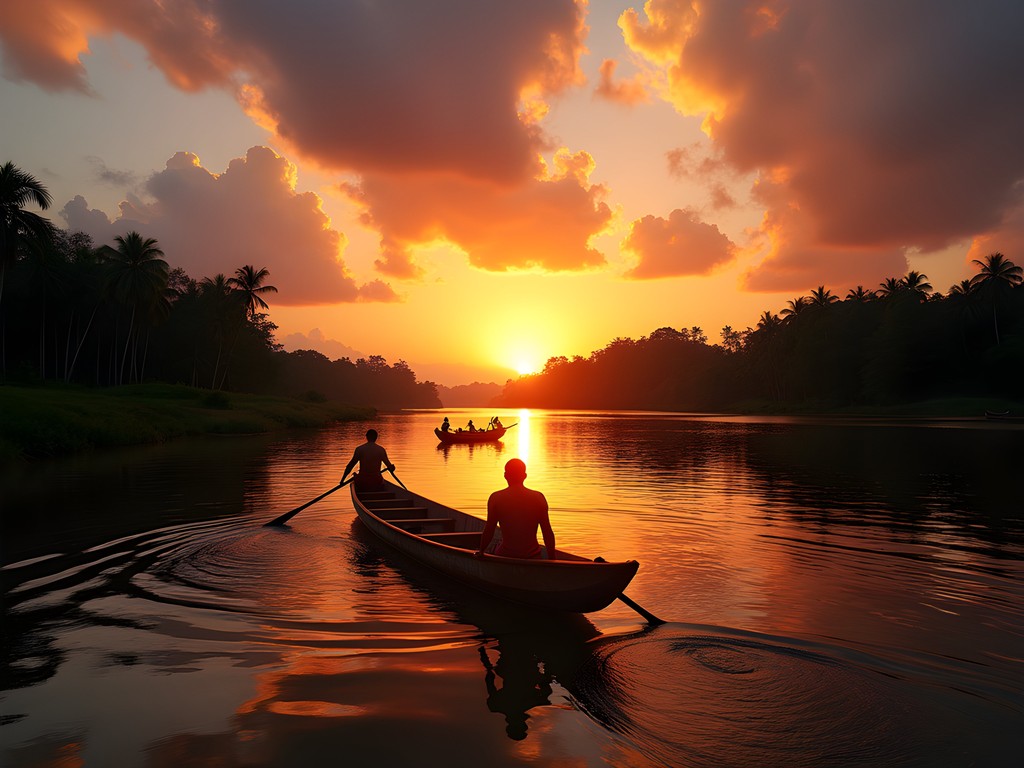
💡 Pro Tips
- Book accommodation in Cayenne for your first night to recover from international travel before heading to Saint-Laurent
- Download offline maps as cell service becomes increasingly unreliable outside major towns
- Carry at least €200 in cash as many local businesses and guides don't accept cards
Base Camp: Where to Stay in Saint-Laurent
Saint-Laurent-du-Maroni offers accommodations that range from basic to surprisingly comfortable, though nothing approaching luxury. This isn't Bangkok or Auckland, where I could retire to five-star comfort after covering a Test match. Here, the experience is more authentic—and for the better.
My recommendation is the Hotel La Tentiaire, a thoughtfully renovated colonial building that once served as administrative offices for the infamous penal colony. The rooms balance historic character with modern necessities, including reliable air conditioning—an absolute must in the Amazonian heat. The central courtyard, with its mango trees and resident toucans, provides a peaceful retreat after days of exploration.
For those seeking deeper immersion, several eco-lodges operate on the outskirts of town. During my second visit, I spent three nights at Carbet Mitan, a collection of elevated wooden cabins connected by boardwalks above seasonally flooded forest. The experience of falling asleep to the sounds of the rainforest while protected by just a mosquito net is humbling—reminiscent of nights spent camping near remote cricket grounds in Sri Lanka's wildlife reserves, but with an intensity that only the Amazon can deliver.
Regardless of where you stay, a good night's sleep is essential for the physically demanding adventures ahead. I never travel to tropical environments without my portable mosquito net, which has saved me countless times when lodging screens proved inadequate or when unexpected overnight stays in remote villages became necessary.
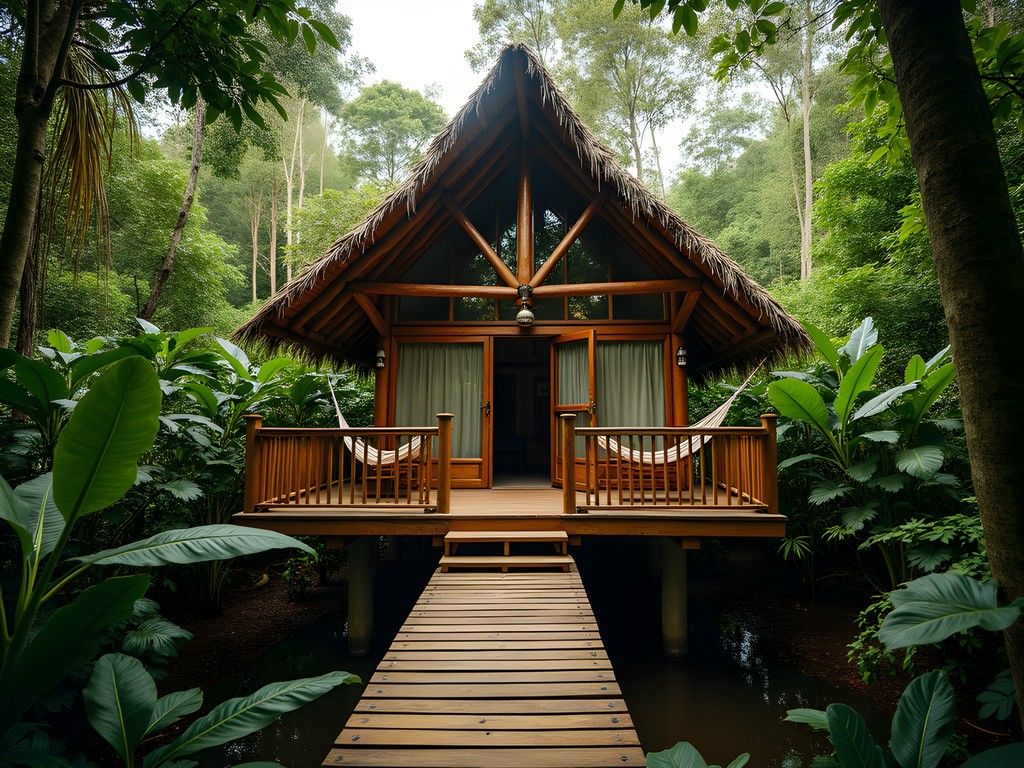
💡 Pro Tips
- Request rooms away from the street at Hotel La Tentiaire—the morning market setup can be quite noisy
- Book eco-lodges at least 3 months in advance as they have limited capacity and fill quickly
- Pack a lightweight sleep sheet even for hotels, as air conditioning can make provided blankets uncomfortably heavy
Into the Rainforest: Multi-Day Trekking Adventures
The true allure of Saint-Laurent-du-Maroni lies beyond the town itself—in the vast, primeval rainforest that stretches unbroken to the Brazilian border. This is where the adventure truly begins, and where proper preparation becomes critical to both safety and enjoyment.
I've undertaken two extended treks from Saint-Laurent, and I cannot overstate the importance of securing an experienced local guide. My guide, Jean-Claude, a Saramaka Maroon whose ancestors escaped slavery centuries ago, possesses knowledge of the forest that no GPS device or app could ever replace. His ability to identify medicinal plants, spot well-camouflaged wildlife, and navigate using subtle environmental cues reminded me of indigenous trackers I'd met while documenting traditional hunting games in Tasmania's wilderness.
The most rewarding route is the four-day Montagne Tortue (Turtle Mountain) trek, which ascends from lowland rainforest through distinct ecological zones. The trail is challenging—often no more than a machete-cleared path through dense undergrowth—but the rewards are extraordinary. From the summit, the view extends across an unbroken green canopy that stretches to the horizon, a living carpet punctuated by morning mist.
For this trek, my hiking boots proved invaluable on the slippery, muddy ascents. Unlike the volcanic trails I've hiked in Costa Rica or the Azores, these paths consist largely of clay that becomes treacherously slick after rain. The aggressive tread pattern and ankle support prevented several potential injuries.
Camp is established in forest clearings or at designated carbets (basic shelters) along the route. These sites are simple—typically a raised wooden platform with a roof—but provide crucial protection from the elements and crawling creatures. Nights in the rainforest are an experience unto themselves: the cacophony of insects, the distant calls of howler monkeys, and the occasional heavy fruit dropping from the canopy create a primal soundtrack unlike any other.

💡 Pro Tips
- Book guides through the Association des Guides de l'Amazonie Française rather than through hotels or online agencies
- Pack twice as many socks as you think you'll need—the humidity means nothing fully dries overnight
- Bring water purification tablets as a backup, even though guides typically handle water collection and treatment
River Journeys: Exploring Maroon and Indigenous Communities
The Maroni River isn't merely a geographical border—it's a cultural highway that has connected communities for centuries. While the rainforest treks offer ecological immersion, the river journeys provide cultural context that, as a journalist, I find equally compelling.
Traditional dugout canoes called pirogues, now typically fitted with outboard motors, are the primary means of transportation. These vessels—some quite large and capable of carrying up to fifteen passengers—navigate the river with remarkable agility. The journey upstream reveals a progression of Maroon villages, each with distinct cultural practices despite their shared history of resistance to slavery.
The village of Papaïchton, a day's journey upriver, offers a particularly meaningful experience. Here, the Aluku Maroon community maintains traditions that blend West African heritage with adaptations to Amazonian life. I was fortunate to witness a Awasa dance ceremony during my visit—a rhythmic performance that serves as both entertainment and spiritual communion. The parallels to ceremonial dances I'd documented in cricket-playing communities of India's Western Ghats were striking, despite the vast geographical separation.
Further upriver, indigenous Wayana communities maintain an even more traditional lifestyle. Visits to these settlements must be arranged well in advance through proper channels, with appropriate permissions and cultural sensitivity. The rewards of such careful preparation include demonstrations of traditional hunting techniques, cassava processing, and perhaps most impressively, the creation of intricate cotton hammocks that take months to complete.
For these river journeys, my waterproof camera proved essential. The combination of humidity, splash from the river, and sudden tropical downpours would have rendered my professional equipment unusable. This compact camera captured remarkable images of river life while surviving conditions that would destroy more sensitive equipment.
The river itself tells a complex environmental story. Traditional gold mining practices have given way to more destructive industrial operations in some areas, creating visible impacts on water quality. Conservation efforts led by both indigenous communities and French authorities create a fascinating case study in environmental management across cultural and national boundaries.

💡 Pro Tips
- Bring small, thoughtful gifts for community visits—school supplies, fishing hooks, or practical tools are appropriate
- Learn basic Sranan Tongo phrases (the lingua franca along the river) as a sign of respect
- Always ask permission before photographing people or cultural activities
Camp Charvein: Exploring the Intersection of Conservation and Culture
Approximately 30 kilometers south of Saint-Laurent-du-Maroni lies one of French Guiana's most fascinating conservation projects—Camp Charvein. This former agricultural settlement has been transformed into a community-led conservation area where sustainable practices and traditional knowledge combine to protect significant rainforest habitat.
What makes Camp Charvein particularly interesting is its origins. Initially established as a settlement for Hmong refugees from Laos in the 1970s, the area has evolved into a multicultural experiment where Asian agricultural techniques have been adapted to Amazonian conditions. The result is a patchwork of cultivated areas and protected forest that creates unique edge habitats favored by certain wildlife species.
During my week-long stay, I participated in dawn bird-watching excursions led by local guides who seamlessly blend scientific knowledge with traditional understanding. The diversity is staggering—in just one morning, we identified over 40 species, including the elusive Guianan cock-of-the-rock with its brilliant orange plumage. These experiences reminded me of early mornings spent with indigenous trackers in Tasmania's temperate rainforests, though the biodiversity here exists on an entirely different scale.
The conservation work at Camp Charvein focuses on creating sustainable livelihoods that don't require forest destruction. Butterfly farming, sustainable timber harvesting, and ecotourism all contribute to an economic model that values standing forest over cleared land. For visitors, this means opportunities to participate in citizen science projects, from water quality monitoring to wildlife population surveys.
For photographers, the mixed forest-agricultural landscape offers exceptional opportunities. I found my telephoto zoom lens essential for wildlife photography here. The lens's image stabilization allowed for handheld shooting in the dim forest understory, while its reach brought distant canopy species into frame without disturbing natural behaviors.
What struck me most about Camp Charvein was how it defies the common narrative that pits conservation against human needs. Here, cultural preservation and environmental protection work in tandem—a model that could inform approaches elsewhere in the Amazon basin.
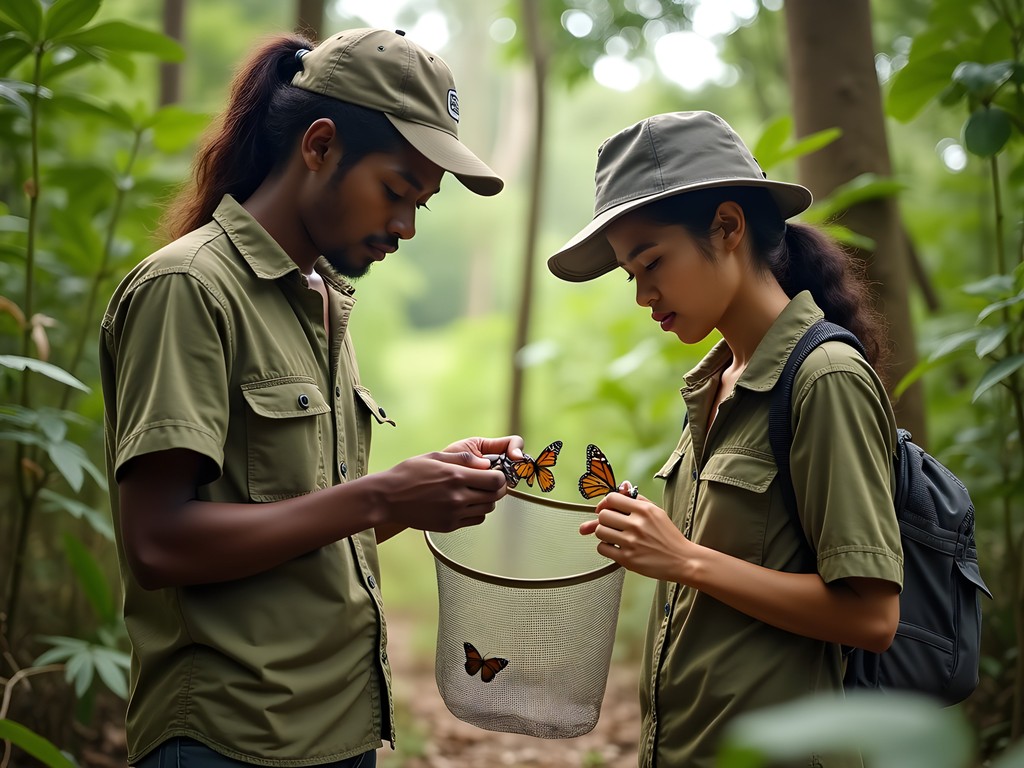
💡 Pro Tips
- Arrange visits through the Camp Charvein Ecological Association at least two weeks in advance
- Participate in the community meal offered on Saturdays—a fascinating fusion of Hmong, Creole, and indigenous cuisines
- Bring binoculars even if you're not an avid birder—the canopy wildlife is often best appreciated with magnification
The Camp de la Transportation: Confronting a Dark History
No visit to Saint-Laurent-du-Maroni would be complete without confronting its infamous history as the processing center for France's penal colonies—including the notorious Devil's Island. The Camp de la Transportation stands as a sobering monument to this dark chapter, its imposing stone buildings preserved as a museum and memorial.
As someone who has documented how sport often reflects broader societal structures—from cricket's colonial legacy to rugby's class divisions—I found the Transportation Camp a profound study in how punishment reflected colonial power dynamics. The facility processed more than 70,000 convicts between 1852 and 1953, including Alfred Dreyfus of the famous Dreyfus Affair and Henri Charrière, whose account 'Papillon' brought international attention to the brutal conditions.
Guided tours are available in French and English, led by knowledgeable local historians. I recommend the extended three-hour tour that includes access to areas typically closed to the public, including the solitary confinement cells where political prisoners were held. The temperature inside these stone chambers, even with modern ventilation, gives some indication of the suffering endured by those imprisoned here.
What makes this site particularly compelling is how it contextualizes the surrounding region. Many escaped convicts integrated into local Maroon communities, creating unique cultural fusions. Others attempted to disappear into the rainforest, with predictably tragic outcomes. The rainforest that modern visitors explore as an adventure destination represented both terrifying wilderness and potential freedom to those imprisoned here.
After the emotionally heavy experience of touring the prison, I found it valuable to process my thoughts along the riverfront promenade. This pleasant walkway, lined with mango trees and offering views across to Suriname, provides a contemplative space to consider how places of historical suffering evolve over time. The contrast between the prison's oppressive architecture and the natural beauty surrounding it creates a powerful tension that photographers will find compelling.
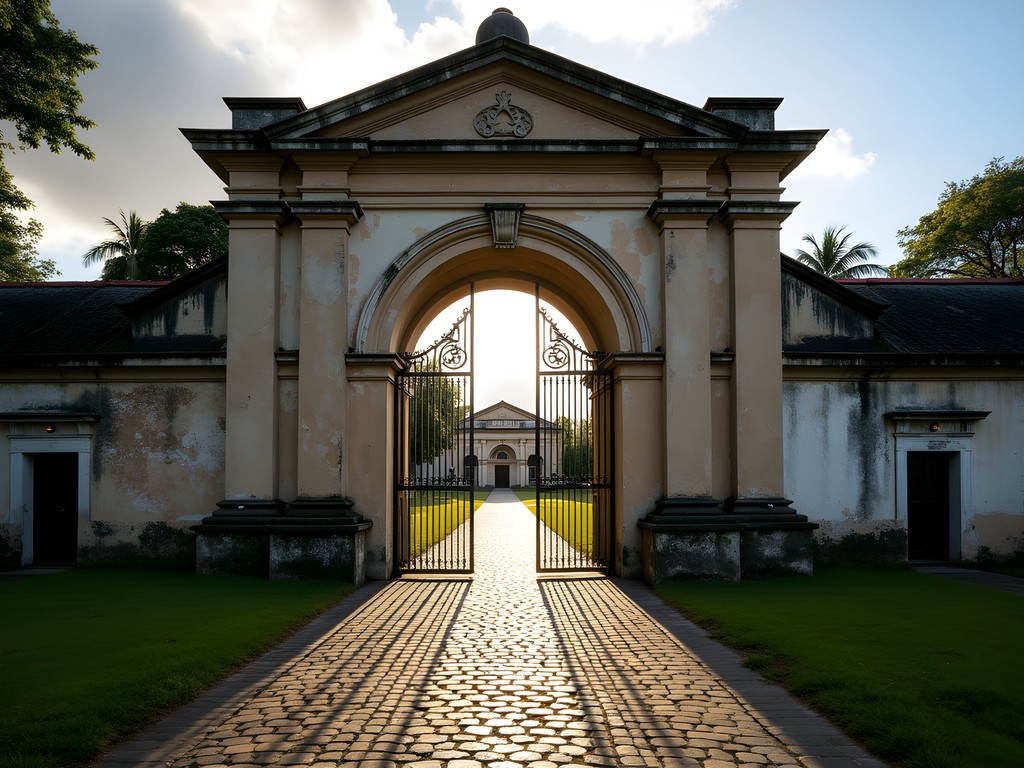
💡 Pro Tips
- Book the extended tour at least one day in advance as spaces are limited
- Visit early in the morning when temperatures are cooler, as parts of the facility can become uncomfortably hot by midday
- Bring water and sun protection for the outdoor portions of the tour
Final Thoughts
As my pirogue pulled away from Saint-Laurent-du-Maroni's riverfront on my final morning, I found myself reflecting on how this remote corner of South America embodies so many global themes—colonial history, cultural resilience, environmental conservation, and the complex relationship between humans and nature. The Amazon rainforest here isn't just a backdrop for adventure; it's an active participant in the ongoing story of this region. The physical challenges of trekking through primary rainforest or navigating river rapids reward visitors with experiences that commercial tourism simply cannot replicate. Saint-Laurent-du-Maroni demands respect—for its natural conditions, for its cultural complexity, and for its historical weight. Those willing to approach with appropriate preparation and an open mind will discover a destination that transforms perspectives far beyond the typical travel experience. As climate change threatens rainforests worldwide, places like Saint-Laurent-du-Maroni become ever more precious—living libraries of biodiversity and cultural knowledge that we cannot afford to lose.
✨ Key Takeaways
- Always engage local guides for both cultural context and safety in the rainforest
- Plan river journeys to include both natural wonders and cultural exchanges with Maroon communities
- Balance adventure activities with time to understand the region's complex colonial history
- Support community-based conservation initiatives like Camp Charvein that blend traditional and scientific approaches
📋 Practical Information
Best Time to Visit
September to November (fall dry season)
Budget Estimate
€1500-2500 per week excluding international flights
Recommended Duration
7-10 days minimum
Difficulty Level
Advanced
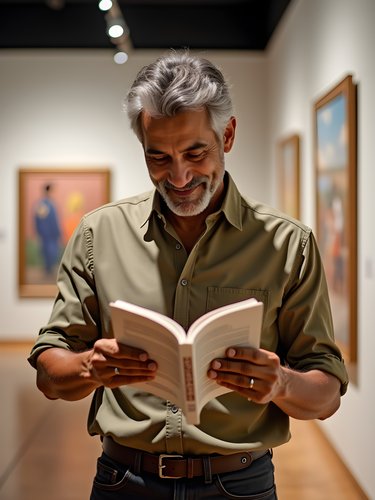
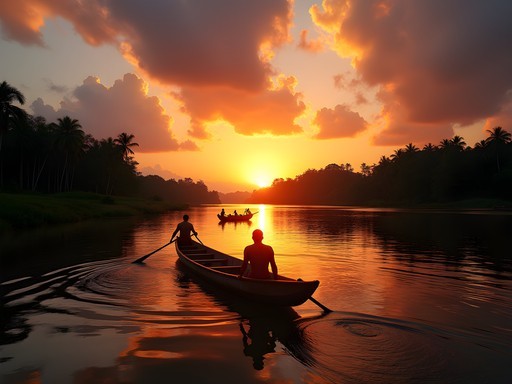
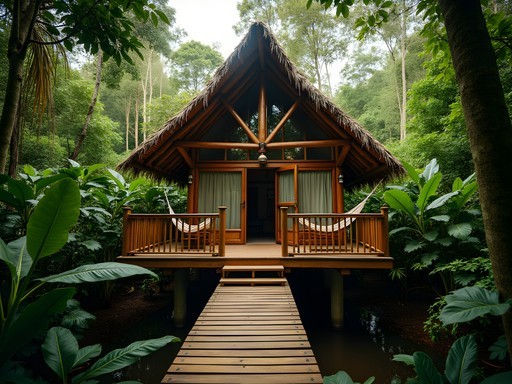














Comments
escapenomad
Just got back from Saint-Laurent last month! Wish I'd seen this guide before going. One thing I'd emphasize is how unpredictable transportation can be in this region. Our boat to Apatou was delayed by a full day due to weather, and there's really no way to plan for that. Best advice is to build buffer days into your itinerary. Also, for accommodation, we stayed at La Tentiaire guesthouse which was fantastic - beautiful garden setting and the owner helped arrange all our excursions. The WiFi was practically non-existent though, so download maps and info beforehand!
beachwalker
Thanks for the accommodation tip! Did you need to book La Tentiaire in advance or can you just show up?
escapenomad
Definitely book ahead, especially in dry season (July-November). There aren't many quality places to stay and they fill up quickly with researchers and eco-tourists.
TravelWithKids
Would you recommend this destination for families with teenagers? Or is it too intense?
starmate
I saw several families with teens while I was there! There are different trek options ranging from easy day trips to more challenging multi-day adventures. Just make sure your kids are okay with basic conditions - no AC, limited electricity, etc.
RainforestFan22
Those photos of the river at dawn are absolutely stunning! Bucket list material right here.
springexplorer
Great post! I'm planning a trip there in January. How safe did you feel in Saint-Laurent itself? And did you find the public transportation reliable for getting around town?
starmate
Not the author but I found Saint-Laurent pretty safe! It's small enough that you can walk most places during the day. At night, just take the usual precautions. Public transport is basic but works - though for the rainforest trips you'll need guides for sure.
springexplorer
Thanks so much! That's really helpful. Can't wait to experience those river journeys!
Sophia Gomez
Amit, your description of the pirogue journey along the Maroni River took me right back to my own Amazon adventure last year! There's something so magical about gliding through that misty morning water with nothing but jungle sounds surrounding you. For anyone planning this trip, I highly recommend spending at least one night in a hammock at a riverside camp - the stargazing is unbelievable. I used my waterproof backpack throughout the journey and it was a lifesaver during those sudden downpours. Did you make it to any of the gold mining history sites? That was a fascinating part of my visit.
springexplorer
Those riverside camps sound amazing! How did you arrange that part of your trip? Through a tour company or independently?
Sophia Gomez
I went through a local guide named Jean-Pierre who was recommended by my hostel. Much cheaper than the big tour companies and he was incredibly knowledgeable about the local ecology and culture!
starmate
Just got back from Saint-Laurent last month and this post is spot on! The multi-day treks are absolutely worth it. We did the 4-day journey to visit some of the Maroon communities and it was life-changing. One tip though - the humidity is no joke. Bring twice as many clothes as you think you need and definitely invest in some serious bug spray. The mosquitoes there are practically the size of hummingbirds!
Sophia Gomez
Did you find it difficult to communicate with the local communities? I'm planning a trip and my French is pretty basic!
starmate
Not at all! Most guides are multilingual and in the tourist areas people speak some English. In the more remote communities, guides translate. Honestly, the language barrier added to the adventure! Just learn a few basic French phrases and you'll be fine.
Megan Martin
Excellent guide to a truly underrated destination! I visited Saint-Laurent-du-Maroni while researching sustainable tourism initiatives in French Guiana. One thing I'd add is that the language barrier can be significant outside of tourist areas. Even basic French phrases go a long way, and I found Google Translate's offline French dictionary essential when venturing into more remote communities. For those interested in the Maroon cultures, timing your visit around one of their festivals provides incredible insight into their traditions. The Meke Bigi Yari celebrations in April are particularly spectacular. Just remember to approach cultural experiences respectfully - always ask permission before taking photos of people or their homes.
rainforestfan
Just got back from Saint-Laurent myself! The Camp de la Transportation tour was sobering but so important. One tip I'd add - if you're there during rainy season (like I was), the mosquitoes are BRUTAL. Bring twice as much repellent as you think you need. And don't miss eating at the little food stalls by the river at sunset - best grilled fish I've ever had!
globegal
I'm planning a trip for next spring and wondering about transportation within the region. Did you find it easy to arrange boat trips once there, or should I book everything in advance? Also curious about what gear was essential for your rainforest treks!
Frank Garcia
Not the author, but I was in Saint-Laurent last year. For boat trips, I found it much better to arrange once there - prices were better and you can assess operators in person. Essential gear: definitely bring a good headlamp for night walks, quick-dry clothes (nothing stays dry!), and I was glad I had my water filter since tap water isn't always reliable. If you're staying in town, the local markets are great for supplies too!
globegal
Thanks Frank! Good to know about arranging boats locally. Did you need French language skills to get by?
Frank Garcia
Some basic French helps a lot, especially with older locals. In tourist areas people often speak some English, but having a translation app saved me many times!
bluenomad
What about mosquitoes? Are they as bad as everyone says in the Amazon?
Amit Sullivan
In one word: YES! Bring strong repellent and lightweight long sleeves/pants. The evenings are particularly fierce!
Venture X
Premium card with 2X miles, $300 travel credit, Priority Pass